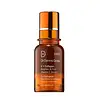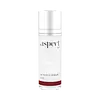What's inside
What's inside
 Key Ingredients
Key Ingredients

 Benefits
Benefits

 Concerns
Concerns

 Ingredients Side-by-side
Ingredients Side-by-side

Water
Skin ConditioningGlycerin
Humectant3-O-Ethyl Ascorbic Acid
Skin ConditioningNiacinamide
SmoothingGlycereth-7 Triacetate
EmollientLactic Acid
BufferingSd Alcohol 40-B
AstringentHydroxyethylcellulose
Emulsion StabilisingDimethyl Isosorbide
SolventAscorbic Acid
AntioxidantCollagen Amino Acids
MoisturisingSuperoxide Dismutase
AntioxidantGlycine
BufferingCarnitine Hcl
HumectantUbiquinone
AntioxidantHexylresorcinol
AntimicrobialEmblica Officinalis Fruit Extract
Skin ConditioningHydrolyzed Soy Protein
HumectantTetrahexyldecyl Ascorbate
AntioxidantIsoquercetin
AntioxidantMandelic Acid
AntimicrobialPueraria Lobata Root Extract
HumectantCurcuma Longa Root Extract
MaskingPhytic Acid
Citric Acid
BufferingTetrasodium EDTA
Sodium Citrate
BufferingButylene Glycol
HumectantXanthan Gum
EmulsifyingPolysorbate 20
EmulsifyingT-Butyl Alcohol
PerfumingSodium Hydroxide
BufferingPolysorbate 80
EmulsifyingDenatonium Benzoate
MaskingBenzyl Alcohol
PerfumingPhenoxyethanol
PreservativeSodium Benzoate
MaskingPotassium Sorbate
PreservativeWater, Glycerin, 3-O-Ethyl Ascorbic Acid, Niacinamide, Glycereth-7 Triacetate, Lactic Acid, Sd Alcohol 40-B, Hydroxyethylcellulose, Dimethyl Isosorbide, Ascorbic Acid, Collagen Amino Acids, Superoxide Dismutase, Glycine, Carnitine Hcl, Ubiquinone, Hexylresorcinol, Emblica Officinalis Fruit Extract, Hydrolyzed Soy Protein, Tetrahexyldecyl Ascorbate, Isoquercetin, Mandelic Acid, Pueraria Lobata Root Extract, Curcuma Longa Root Extract, Phytic Acid, Citric Acid, Tetrasodium EDTA, Sodium Citrate, Butylene Glycol, Xanthan Gum, Polysorbate 20, T-Butyl Alcohol, Sodium Hydroxide, Polysorbate 80, Denatonium Benzoate, Benzyl Alcohol, Phenoxyethanol, Sodium Benzoate, Potassium Sorbate
Water
Skin ConditioningGlycerin
HumectantPanthenol
Skin ConditioningAscorbyl Tetraisopalmitate
AntioxidantTocopheryl Acetate
AntioxidantLecithin
EmollientOryza Sativa Bran Oil
EmollientPhenoxyethanol
PreservativeCitrus Aurantium Dulcis Peel Oil
MaskingPullulan
Citrus Reticulata Peel Oil
MaskingEpilobium Angustifolium Flower/Leaf/Stem Extract
Skin ConditioningNannochloropsis Oculata Extract
HumectantPalmitoyl Tripeptide-5
Skin ConditioningTerminalia Ferdinandiana Fruit Extract
AntioxidantBackhousia Citriodora Leaf Extract
AstringentCodonopsis Lanceolata Extract
AntioxidantCitrus Glauca Fruit Extract
HumectantDavidsonia Jerseyana Fruit Extract
AntioxidantDipeptide Diaminobutyroyl Benzylamide Diacetate
Skin ConditioningCitrus Aurantium Amara Leaf/Twig Oil
MaskingLactic Acid
BufferingXanthan Gum
EmulsifyingSclerotium Gum
Emulsion StabilisingPotassium Sorbate
PreservativeSodium Stearoyl Glutamate
CleansingDisodium EDTA
Ethylhexylglycerin
Skin ConditioningBenzoic Acid
MaskingSorbic Acid
PreservativeSodium Metabisulfite
AntioxidantWater, Glycerin, Panthenol, Ascorbyl Tetraisopalmitate, Tocopheryl Acetate, Lecithin, Oryza Sativa Bran Oil, Phenoxyethanol, Citrus Aurantium Dulcis Peel Oil, Pullulan, Citrus Reticulata Peel Oil, Epilobium Angustifolium Flower/Leaf/Stem Extract, Nannochloropsis Oculata Extract, Palmitoyl Tripeptide-5, Terminalia Ferdinandiana Fruit Extract, Backhousia Citriodora Leaf Extract, Codonopsis Lanceolata Extract, Citrus Glauca Fruit Extract, Davidsonia Jerseyana Fruit Extract, Dipeptide Diaminobutyroyl Benzylamide Diacetate, Citrus Aurantium Amara Leaf/Twig Oil, Lactic Acid, Xanthan Gum, Sclerotium Gum, Potassium Sorbate, Sodium Stearoyl Glutamate, Disodium EDTA, Ethylhexylglycerin, Benzoic Acid, Sorbic Acid, Sodium Metabisulfite
Ingredients Explained
These ingredients are found in both products.
Ingredients higher up in an ingredient list are typically present in a larger amount.
Glycerin is already naturally found in your skin. It helps moisturize and protect your skin.
A study from 2016 found glycerin to be more effective as a humectant than AHAs and hyaluronic acid.
As a humectant, it helps the skin stay hydrated by pulling moisture to your skin. The low molecular weight of glycerin allows it to pull moisture into the deeper layers of your skin.
Hydrated skin improves your skin barrier; Your skin barrier helps protect against irritants and bacteria.
Glycerin has also been found to have antimicrobial and antiviral properties. Due to these properties, glycerin is often used in wound and burn treatments.
In cosmetics, glycerin is usually derived from plants such as soybean or palm. However, it can also be sourced from animals, such as tallow or animal fat.
This ingredient is organic, colorless, odorless, and non-toxic.
Glycerin is the name for this ingredient in American English. British English uses Glycerol/Glycerine.
Learn more about GlycerinLactic Acid is another well-loved alpha hydroxy acid (AHA). It is gentler than glycolic acid but still highly effective.
Its main role is to exfoliate the surface of the skin by loosening the “glue” that holds dead skin cells together. Shedding those old cells leads to smoother, softer, and more even-toned skin.
Because lactic acid molecules are larger than glycolic acid, they don’t penetrate as deeply. This means they’re less likely to sting or irritate, making it a great choice for beginners or those with sensitive skin.
Like glycolic acid, it can:
Lactic acid also acts as a humectant (like hyaluronic acid). It can draw water into the skin to improve hydration and also plays a role in the skin's natural moisturizing factor (NMF) in the form of sodium lactate.
Studies show it can boost ceramide production to strengthen the skin barrier and even help balance the skin’s microbiome.
To get results, choose products with a pH between 3-4.
Lower strengths (5-12%) focus on surface exfoliation; higher strengths (12% and up) can reach deeper in the dermis (deeper, supportive layer) to improve skin texture and firmness over time.
Though it was originally derived from milk, most modern lactic acid used in skincare is vegan. It is made through non-dairy fermentation to create a bio-identical and stable form suitable for all formulations.
When lactic acid shows up near the end of an ingredient list, it usually means the brand added just a tiny amount to adjust the product’s pH.
Legend has it that Cleopatra used to bathe in sour milk to help reduce wrinkles.
Lactic acid is truly a gentle multitasker: it exfoliates, hydrates, strengthens, and brightens. It's a great ingredient for giving your skin a smooth, glowing, and healthy look without the harshness of stronger acids.
Read more about some other popular AHA's here:
Learn more about Lactic AcidPhenoxyethanol is a preservative that has germicide, antimicrobial, and aromatic properties. Studies show that phenoxyethanol can prevent microbial growth. By itself, it has a scent that is similar to that of a rose.
It's often used in formulations along with Caprylyl Glycol to preserve the shelf life of products.
Potassium Sorbate is a preservative used to prevent yeast and mold in products. It is commonly found in both cosmetic and food products.
This ingredient comes from potassium salt derived from sorbic acid. Sorbic acid is a natural antibiotic and effective against fungus.
Both potassium sorbate and sorbic acid can be found in baked goods, cheeses, dried meats, dried fruit, ice cream, pickles, wine, yogurt, and more.
You'll often find this ingredient used with other preservatives.
Learn more about Potassium SorbateWater. It's the most common cosmetic ingredient of all. You'll usually see it at the top of ingredient lists, meaning that it makes up the largest part of the product.
So why is it so popular? Water most often acts as a solvent - this means that it helps dissolve other ingredients into the formulation.
You'll also recognize water as that liquid we all need to stay alive. If you see this, drink a glass of water. Stay hydrated!
Learn more about WaterXanthan gum is used as a stabilizer and thickener within cosmetic products. It helps give products a sticky, thick feeling - preventing them from being too runny.
On the technical side of things, xanthan gum is a polysaccharide - a combination consisting of multiple sugar molecules bonded together.
Xanthan gum is a pretty common and great ingredient. It is a natural, non-toxic, non-irritating ingredient that is also commonly used in food products.
Learn more about Xanthan Gum